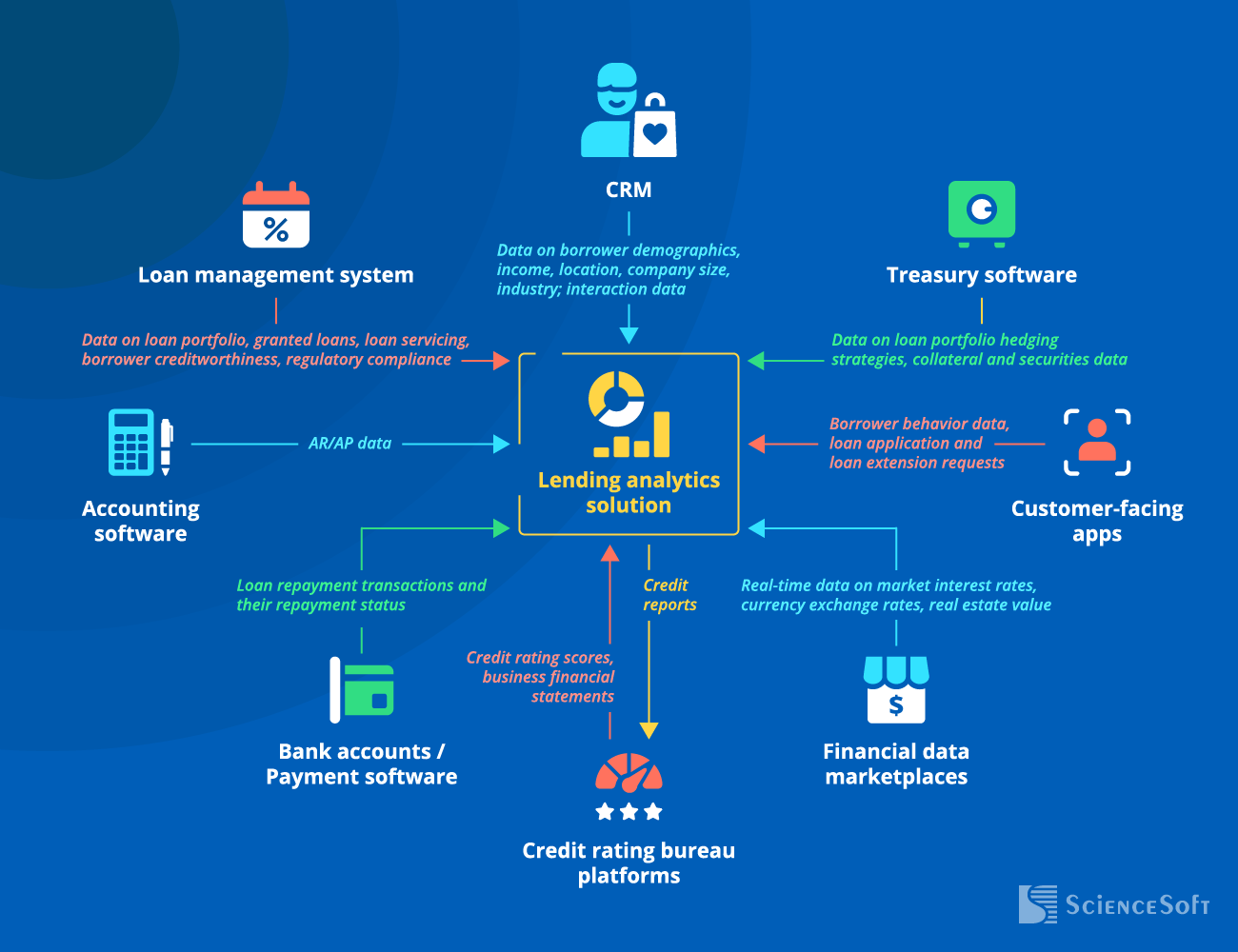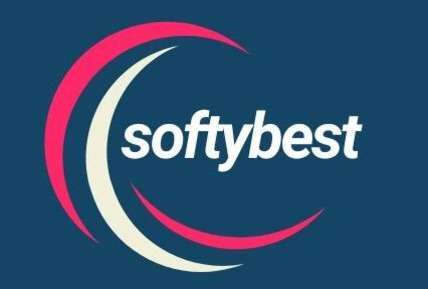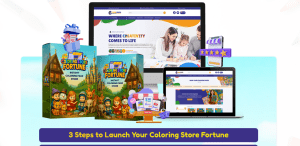Choosing the right accounting software for lending business can make or break your operations. Loans involve interest calculations, payment schedules, and regulatory requirements. Simple spreadsheets often lead to errors, missed deadlines, and frustrated clients.
In this guide, I’ll walk you through everything you need to know to pick and implement the best solution for your lending venture.
I’ve helped dozens of small lenders—from peer-to-peer startups to local credit unions—streamline their finances. I’ve seen firsthand how the right software reduces manual work, ensures compliance, and provides real-time insights into loan portfolios. By the end, you’ll understand key features, common pitfalls, and how to select a tool that fits your budget and growth plans.
My Expertise and Experience
I’m a digital marketing and fintech consultant with over 12 years guiding small financial businesses. I’ve audited loan accounting workflows, recommended software solutions, and trained teams on best practices. One community bank I advised cut reconciliation time by 70% after switching from manual ledgers to a specialized loan accounting platform.
Beyond banks, I’ve worked with startup founders launching lending apps. I helped integrate accounting modules into their tech stacks, ensuring every loan origination, disbursement, and repayment automatically synced with their general ledger. These hands-on projects shape the insights I share here.

Why Accounting Software for Lending Business Matters
Loan businesses juggle multiple moving parts:
- Interest Accrual: Calculating daily or monthly interest precisely.
- Payment Tracking: Recording partial payments, late fees, and prepayments.
- Regulatory Reporting: Generating reports for auditors and regulators.
Without specialized software, you risk:
- Human Errors: Manual entry mistakes can misstate your financial position.
- Compliance Gaps: Missing regulatory deadlines or misreporting loan data.
- Inefficient Operations: Teams are spending hours on reconciliations instead of growth activities.
A good system automates these tasks. It gives you accurate numbers, audit trails, and customizable reports at the click of a button.
Challenges of Manual Loan Accounting
Complex Loan Products
Today’s lenders offer fixed-rate, adjustable-rate, lines of credit, and more. Each product has distinct interest calculations and fee structures. Manual spreadsheets quickly become unwieldy when you scale beyond a handful of loans.
Regulatory Compliance
Financial regulators require timely, accurate reporting on loan performance, delinquencies, and capital adequacy. Staying compliant means generating detailed schedules and stress-test scenarios—tasks prone to error without automation.
Risk of Errors and Fraud
Manual processes increase the risk of data entry errors or even intentional manipulation. Lack of robust audit trails can leave you exposed if discrepancies arise during an audit or client dispute.
Time and Resource Drain
Reconciliation and report preparation can consume entire days each month. For small teams, this delays strategic work like marketing new loan products or improving customer service.

Key Features to Look For
When evaluating software, prioritize these capabilities:
- Automated Interest Calculations: Supports simple, compound, and adjustable-rate formulas, handles grace periods and prepayment penalties.
- Loan Lifecycle Management: Tracks origination, disbursement, repayment, and payoff, manages loan modifications and renewals.
- Payment Processing & Integration: Connects to payment gateways and bank feeds, records auto-debited payments and EFTs.
- Compliance & Reporting: Generates regulatory reports (e.g., IFRS 9, CECL), offers audit trails and user-action logs.
- General Ledger Sync: Posts interest income and fee revenue automatically, supports multiple currencies and tax jurisdictions.
- Customizable Dashboards: Visualizes portfolio performance, aging schedules, and KPIs, sends alerts for past-due accounts or covenant breaches.
- Scalability & Security: Cloud-based or on-premise options, role-based access control, and data encryption.
These features ensure accuracy, save time, and support growth without adding headcount.
Top 5 Accounting Software for Lending Businesses
Choosing the right platform can feel like searching for a needle in a haystack. To simplify, here are my top five picks for accounting software for lending business—tools I’ve seen perform well in real-world lending operations.
| Software | Best For | Pricing (Approx.) | Key Feature Highlights |
|---|---|---|---|
| LoanPro | Mid-sized lenders | $299–$899/mo | Custom interest rules, repayment schedules, and API |
| TurnKey Lender | End-to-end lending stack | $1,500–$5,000/mo | Loan origination + accounting + analytics |
| Nortridge | Community banks | Custom (starts $2k/mo) | On-prem & cloud, compliance reporting |
| QuickBooks Online | Small lenders with add-ons | $30–$200/mo + plugins | Familiar UI + bank feeds + loan add-on apps |
| Xero + Add-Ons | International teams | $25–$65/mo + apps | Multi-currency, payment integration |
LoanPro
Overview: LoanPro is a cloud-native platform designed for mid-sized lenders. It handles complex interest calculations, custom payment plans, and integrates seamlessly with your general ledger via API.
Pros:
- Highly customizable interest rules and fee structures
- Robust API for syncing with ERP or CRM systems
- Built-in compliance checks for state and federal regulations
Cons:
- Steeper learning curve for non-technical teams
- Starting price (~$299/mo) may intimidate micro-lenders
Pricing: Plans range from $299 to $899 per month, depending on loan volume and feature sets.
Real Story: I advised a peer-to-peer lender on migrating from spreadsheets to LoanPro. Within one quarter, they cut manual reconciliation time by 60% and reduced interest calculation errors to zero.
TurnKey Lender
Overview: TurnKey Lender offers a full lending lifecycle solution—origination, servicing, and accounting—all in one suite. Its analytics dashboard provides real-time insights into loan performance.
Pros:
- End-to-end functionality means fewer integrations
- AI-driven decision-making speeds up approvals
- Detailed audit trails for every transaction
Cons:
- Higher entry price ($1,500–$5,000/mo)
- Some features (like advanced analytics) require the premium tier
Pricing: Starts around $1,500 per month, scaling with loan count and modules.
Real Story: A startup credit union I partnered with adopted TurnKey. They saw a 30% faster loan approval process and real-time GL posting, eliminating nightly batch uploads.
Nortridge Loan System
Overview: Nortridge is a legacy platform used by many community banks. It supports both on-premise and cloud deployments and emphasizes regulatory compliance.
Pros:
- Mature, battle-tested system with detailed compliance reports
- Flexible deployment options
- Strong support for fixed and adjustable-rate mortgages
Cons:
- The interface feels dated compared to newer SaaS tools
- Customization often requires a consulting service
Pricing: Custom quotes, typically starting at $2,000 per month for cloud hosting.
Real Story: I worked with a small bank that switched from an aging in-house system to Nortridge Cloud. They regained control over loan module updates and cut IT maintenance costs by 40%.
QuickBooks Online + Lending Add-Ons
Overview: QuickBooks Online (QBO) isn’t a lending system out of the box, but with apps like AutoEntry and Loan Manager, you can track loans, interest, and payments alongside your other accounting.
Pros:
- Familiar interface for most small-business owners
- Low monthly cost ($30–$200) plus affordable plugins
- Vast marketplace of third-party apps
Cons:
- Requires multiple add-ons to match specialized features
- Can become fragmented across apps if not managed carefully
Pricing: QBO plans start at $30/mo. Loan Manager apps add $5–$50/mo each.
Real Story: A micro-lender I advised used QBO + Loan Manager to handle ten small business loans. The setup cost under $100/mo and integrated smoothly with their existing bookkeeping.
Xero with Lending Integrations
Overview: Xero offers strong multi-currency support and bank feeds. Paired with apps like Spotcap or Fig Loans, it can serve small international lending businesses.
Pros:
- Excellent for cross-border lending papers
- User-friendly dashboard and unlimited users
- An extensive ecosystem of integrations
Cons:
- The core system lacks loan-specific modules
- Third-party apps vary in quality and support
Pricing: Xero plans run $25–$65/mo. App fees vary ($10–$100/mo).
Real Story: I assisted a fintech in Europe that used Xero + Spotcap integration. They automated loan repayments in three currencies, cutting FX reconciliation by 80%.

How to Choose the Right Software
Define Your Loan Products
List every interest type, fee, and payment scenario you offer. Choose software that handles each without workarounds.
Assess Integration Needs
Do you need CRM or ERP connections? Look for robust APIs or native integrations.
Set Your Budget
Consider total cost: base subscriptions + add-ons + implementation fees. Remember, better automation often pays for itself.
Trial and Demo
Request a sandbox or trial account. Walk through your loan scenarios. Involve your accounting and operations teams.
Check Support and Training
Ensure the vendor offers onboarding assistance and responsive support. Good training minimizes downtime and errors.

Implementation Strategies & Best Practices
Choosing the right accounting software for lending business is only half the battle. A smooth implementation ensures you reap the full benefits. Below is a step-by-step guide to rolling out your new loan accounting system with minimal disruption.
1. Project Planning & Stakeholder Alignment
Before you touch any software, assemble a project team:
- Project Lead: Oversees timeline, budget, and vendor communication.
- Finance Lead: Defines accounting requirements and testing scenarios.
- Operations Lead: Maps loan processes and user workflows.
- IT Lead: Manages integrations, security, and infrastructure.
Hold a kickoff meeting to agree on objectives, milestones, and responsibilities. I once worked with a small credit union that skipped this step—without clear roles, IT built integrations the finance team couldn’t use, leading to costly rework.
2. Data Migration & Cleansing
Migrating existing loan data is critical. Follow these steps:
- Inventory Data Sources: Spreadsheets, legacy systems, CRM records.
- Define Data Fields: Customer details, loan terms, payment history, interest rates, and fees.
- Clean & Standardize: Remove duplicates, fix formatting (dates, currencies), and validate balances.
- Test Imports: Import a small batch and verify accuracy in the new system.
In one peer-to-peer lending platform I advised, cleaning data first caught 12 inconsistencies in interest rates that would have skewed financial reports.
3. Configuration & Customization
Next, tailor the software to your products:
- Interest Schedules: Set up fixed, variable, and bespoke accrual methods.
- Fee Structures: Define origination fees, late penalties, and prepayment discounts.
- Repayment Plans: Configure monthly, biweekly, and custom installment calendars.
- Regulatory Settings: Enable mandatory disclosures, aging buckets, and CECL/IFRS 9 parameters.
Resist over-customization. Stick to core features first, then only add custom fields if essential. I’ve seen lenders spend months on non-essential tweaks that delivered little ROI.
4. Integrations & Automation
Seamless data flow reduces manual work:
- Bank Feeds & Payment Gateways: Link your checking accounts and autopay systems for real-time posting.
- CRM & Origination Platforms: Sync customer data and loan approvals to eliminate duplicate entry.
- General Ledger & ERP: Automate revenue recognition, amortization, and fee posting.
During an implementation for a community bank, setting up bi-directional integration with the core banking system cut monthly closing from ten days to three.
5. User Training & Change Management
Software is only as good as its users:
- Role-Based Training: Finance teams focus on reconciliation and reporting. Loan officers learn origination workflows. Support staff handle customer inquiries and payment adjustments.
- Hands-On Workshops: Use real loan examples for practice.
- Support Resources: Create quick-reference guides, video snippets, and an FAQ repository.
A startup I supported held weekly “office hours” during go-live. This open forum reduced support tickets by 40% in the first month.
6. Testing & Quality Assurance
Rigorous testing prevents downstream headaches:
- Unit Tests: Test individual modules: interest calculation, payment posting, and reporting.
- Integration Tests: Verify data flows correctly between systems (e.g., payments posted in ERP).
- User Acceptance Testing (UAT): End-users run through typical scenarios and sign off on accuracy.
- Parallel Run (Optional): Run old and new systems side by side for one or two cycles to compare results.
In one bank, a parallel run caught a misconfigured rounding rule that would have under-collected interest by $2,000 annually.
7. Go-Live & Post-Launch Support
Plan your go-live for a low-activity period (e.g., weekend or month-end slack):
- Final Data Freeze: Close out old system entries before cut-over.
- Migration & Validation: Import the final dataset, then verify loan balances and accruals.
- Active Monitoring: Track dashboard metrics: daily payment counts, exception reports, and reconciliation errors.
- Dedicated Help Desk: Provide rapid-response support for the first 2–4 weeks.
After a go-live for a fintech lending app, I staffed three extra support agents for the initial two weeks—this proactive approach kept customer satisfaction above 95%.
8. Ongoing Maintenance & Best Practices
To keep your system running smoothly:
- Regular Reviews: Quarterly audits of fee schedules and interest rules.
- Software Updates: Apply vendor patches and new features after staging and testing.
- Continuous Training: Onboard new hires and refresh existing users on advanced features.
- Performance Metrics: Monitor KPIs like days to close, delinquency rates, and revenue accuracy.
By embedding these practices, one credit union maintained error rates below 0.1% and shortened the month-end close to two days.

Advanced Integrations & Emerging Trends
As the lending industry evolves, so do the integrations and technologies that enhance accounting software for the lending business. Staying ahead of these trends ensures your operations remain efficient and competitive.
AI & Machine Learning
- Automated Risk Scoring: AI analyzes repayment history and external data to predict default risk. Integrating these insights with your accounting system flags high-risk loans early.
- Smart Reconciliation: Machine learning matches payments to invoices with greater accuracy over time, reducing manual intervention. I’ve seen ML reduce unmatched transactions by 85% in just two months.
Open Banking & API Ecosystems
- Real-Time Bank Feeds: Open banking APIs allow your software to fetch transaction data instantly, speeding up reconciliation and cash flow forecasting.
- Embedded Lending: Fintech platforms can embed your loan products directly in partner apps, with accounting entries created automatically via API webhooks.
Blockchain & Smart Contracts
- Immutable Audit Trails: Recording loan agreements on blockchain ensures tamper-proof records. Your accounting software can reference these chains to verify loan terms and payments.
- Automated Settlements: Smart contracts trigger repayments or disbursements when predefined conditions are met, syncing back to your general ledger without manual posting.
Real-Time Reporting & Dashboards
- Live Portfolio Analytics: Push data to dashboards continuously, giving executives up-to-the-minute views on delinquency rates and interest income.
- Custom Alerts: You can set thresholds for key metrics, such as days past due or portfolio concentration, and receive instant notifications via email or chat apps.

Future of Loan Accounting Software
Looking ahead, these trends will shape accounting software for lending businesses over the next 3–5 years:
| Trend | Description | Impact |
|---|---|---|
| Embedded Finance | Loans offered within non-financial apps | Expanded distribution channels |
| Predictive Analytics | AI-driven forecasts for portfolio performance | Proactive risk management |
| Regulatory Tech (RegTech) | Automated compliance monitoring and reporting | Reduced audit costs and error rates |
| Cloud-Native Architectures | Microservices-based platforms for flexibility | Faster updates and seamless scalability |
| Decentralized Finance | Peer-to-peer lending via blockchain networks | New funding sources and global reach |
By embracing these innovations, lenders can automate complex tasks, improve decision-making, and deliver seamless customer experiences.
Frequently Asked Questions
Q1: What features are essential in accounting software for a lending business?
Look for automated interest calculations, loan lifecycle management, GL integration, and regulatory reporting capabilities to handle diverse loan products accurately.
Q2: Can small lenders use QuickBooks for loan accounting?
Yes—QuickBooks Online paired with loan-management add-ons works for micro-lenders handling simple loan portfolios. Be prepared to manage multiple integrations and test data flows carefully.
Q3: How do I ensure compliance with IFRS 9 or CECL?
Choose software that includes built-in modules for expected credit loss calculations. Ensure it supports scenario analysis and produces audit-ready disclosures automatically.
Q4: What’s the typical implementation timeline?
Small lenders can go live in 8–12 weeks, including planning, data migration, configuration, and training. More complex setups with custom integrations may take 4–6 months.
Q5: How much does loan accounting software cost?
The costs range widely, from $30/month (QuickBooks + add-ons) to $5,000+/month (enterprise end-to-end suites). Base your budget on loan volume, feature needs, and integration complexity.
Q6: Is cloud-based or on-premise better for my business?
Cloud solutions offer faster updates and lower upfront costs. On-premise may suit organizations with strict data residency requirements. Evaluate security, costs, and IT resources.
Q7: How do I migrate existing loan data safely?
Inventory all sources, clean and standardize fields, then perform test imports in batches. Verify balances and accruals before final cut-over, and consider a parallel run for added confidence.

Conclusion
Selecting and implementing the right accounting software for lending business transforms your operations. You gain precise interest calculations, automated reconciliations, and real-time insights that drive growth and compliance.






